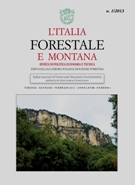Published
2013-02-25
Keywords
- Sardinia (Italy),
- structural complexity,
- systemic silviculture,
- preservation of biological diversity
Abstract
In Sardinia, forest management issues are related to a large range of rural and semi-natural situations, embodying the complexity of the typical Mediterranean land uses. To address the intricate web of questions concerning the forests and the environment, planning is an essential tool. Unfortunately, current lack of knowledge has negatively affected any possibility for planning and programming on this matter. Recently, 2006-2007, the regional government of Sardegna has adopted the PFAR, a framework plan for regional forests and the environment, which today represents the basis for the community-based participatory planning of forest and agro-forestry areas. The plan, adopting a systemic approach, highlights the capabilities, both present and prospective, of forest systems in terms of ecological and naturalistic value, protection, production and social-cultural features, with the main priority of increasing the complexity of ecosystems. In this view, the aim of this paper is to outline a framework for research in silvicultural issues, most prominent in the regional context, taking advantage of the insights that PFAR analysis and documentation offers. The analysis has been developed drawing also on the results of the National Forest Inventory (INFC), crossing available inventory estimates with the problems of interest. Composing an organic framework of major regional silvicultural issues, six 'macro-categories' have come to evidence: Broad-leaved high forests without cork, Potential cork oak compartment, Agro-forestry systems, Coppices, Coniferous forests derived from plantations, Colonization of old fields by trees. Despite sharing some intersection from a territorial point of view, these categories provide a perspective overview, an objective basis for identifying strategies and priorities in the allocation of scarce financial resources available for silviculture.


